
The Soloveitchik dynasty of rabbinic scholars and their students originated the Brisker method of Talmudic study, which is embraced by their followers in the Brisk yeshivas. It is so called because of the Soloveitchiks' origin in the town of Brisk, or Brest-Litovsk, located in what is now Belarus. Many of the first Soloveitchik rabbis were the official rabbis of Brisk, and each in turn was known as "the Brisker Rov". Today, Brisk refers to several yeshivas in Israel and the United States founded by members of the Soloveitchik family, including: ‘Brisk Proper’, R’ Dovid’s, Tomo, and others.
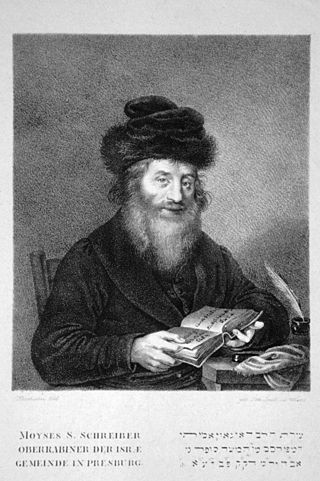
Moses Schreiber (1762–1839), known to his own community and Jewish posterity in the Hebrew translation as Moshe Sofer, also known by his main work Chatam Sofer, Chasam Sofer, or Hatam Sofer, was one of the leading Orthodox rabbis of European Jewry in the first half of the nineteenth century.

Yitzchok Zev Halevi Soloveitchik, also known as Velvel Soloveitchik or the Brisker Rov ("rabbi of/from Brisk",, was an Orthodox rabbi and rosh yeshiva of the Brisk yeshiva in Jerusalem.

The Charedi Council of Jerusalem is a large Haredi Jewish communal organization based in Jerusalem, with several thousands affiliated households. It is led by an independent rabbinical court, chaired by the Gaon Convenor, acronymed Ga'avad, and operated by the Rabbi Convenor, Ra'avad. The Council provides facilities such as dietary laws supervision, ritual baths, a Sabbath enclosure, and welfare services. The Council was founded in 1921 by devout Ashkenazi residents of Jerusalem, especially of the Old Yishuv, who refused to be affiliated in any way with the new Zionist institutions.

Michel Yehuda Lefkowitz was an Israeli Haredi Torah leader and rosh yeshiva in Bnei Brak for over 70 years. He was a maggid shiur at Yeshivas Tiferes Tzion from 1940 to 2011 and rosh yeshiva of Yeshivas Ponovezh L’Tzeirim from 1954 to 2009, raising thousands of students. He was a member of the Moetzes Gedolei HaTorah of Degel HaTorah, a member of Mifal HaShas, and nasi (president) of the Acheinu kiruv organization, and played a leading role in the fight for Torah-true education in yeshivas and Talmud Torahs in Israel. In addition to his own Torah works, he published the teachings of his rebbi, Rabbi Shlomo Heiman, in the two-volume Chiddushei Shlomo.

Aryeh Leib Malin (1906–1962) was a Polish-born American Haredi Jewish rabbi, Talmudic scholar, and Mussarist who taught the Torah and spread rabbinical education in Europe, China, Japan, and the United States.

Yosef DovSoloveitchik was the author of Beis Halevi, by which name he is better known among Talmudic scholars. He was the great-grandson of Chaim Volozhin.

The Mir Yeshiva, commonly known as the Mirrer Yeshiva or The Mir, was a Lithuanian yeshiva located in the town of Mir, Russian Empire. After relocating a number of times during World War II, it has evolved into three yeshivas: one in Jerusalem and two in Brooklyn, New York: the Mir Yeshiva, and Bais Hatalmud.
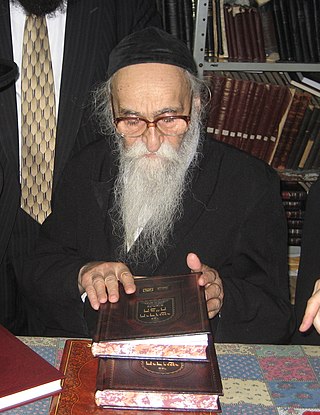
Meshulam Dovid Soloveitchik was a Haredi (ultra-orthodox) rabbi and rosh yeshiva (dean) of one of the branches of the Brisk yeshivas in Jerusalem.
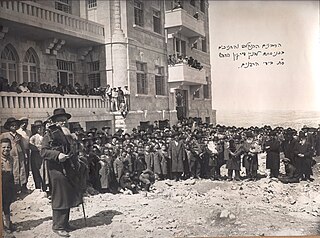
The Diskin Orphanage was an orphanage in the Old City of Jerusalem, established in 1881 by Yehoshua Leib Diskin. From the Jewish Quarter, it moved to Street of the Prophets outside the walls of the Old City. In 1927, it moved to a new building in the Kiryat Moshe neighborhood, near the main entrance to the city from the west.
Naftoli (Naphtalie) Carlebach (1916–2005) was an Orthodox Jewish rabbi and accountant.

Kiryat Unsdorf, also known as Sorotzkin, after its main street, is a Haredi Jewish neighborhood in Jerusalem. It is located along the northern edge of the mountain plateau on which central Jerusalem lies. Constructed between 1970 and 1985, Unsdorf is home to several landmark educational centers. A large percentage of residents are American-born.

Chaim Yehoshua Halberstam, also known as Chaim Shia Halberstam, is a Hasidic Jewish rabbi and the Grand Rabbi of the Satmar community in Monsey, New York. He is a son-in-law of the late Satmar Rebbe, Rabbi Moshe Teitelbaum, and a direct descendant of the first and second Rebbes of Bobov.
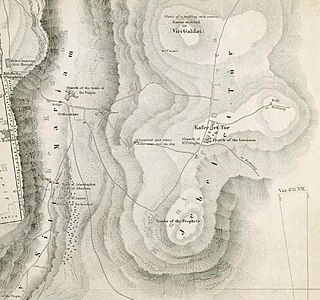
The Jewish Cemetery on the Mount of Olives is the oldest and most important Jewish cemetery in Jerusalem. The Mount of Olives has been a traditional Hebrew/Jewish burial location since antiquity, and the main present-day cemetery portion is approximately five centuries old, having been first leased from the Jerusalem Islamic Waqf in the sixteenth century. The cemetery contains anywhere between 70,000 and 150,000 tombs, including the tombs of famous figures in early modern Jewish history. It is considered to be the largest and holiest historical Jewish cemetery on earth.
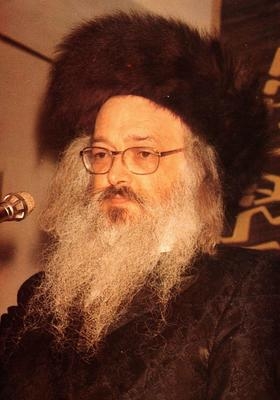
Yisroel Moshe Dushinsky also known as the Maharim, was the second Rebbe of the Dushinsky Hasidic dynasty of Jerusalem, Israel. He assumed the leadership of the Hasidut at the age of 28 upon the death of his father, Rabbi Yosef Tzvi Dushinsky, founder of the dynasty. He was also a member of the rabbinical court of the Edah HaChareidis for over 40 years, completing his tenure as the seventh chief rabbi of the Edah HaChareidis from 1996 to 2003.

Rabbi Yaakov Moshe Charlap was an Orthodox rabbi, talmudist, kabbalist, Rosh Yeshiva of the Mercaz HaRav yeshiva, and a disciple of Rabbi Abraham Isaac Kook.

Yechiel Michel Pines was a Russian-born religious Zionist rabbi, writer, and community leader in the Old Yishuv.

The Choral Synagogue or the Great Synagogue is a former Orthodox Jewish synagogue tin Brest, Belarus. Completed in c. 1862, it was used as a synagogue until World War II, and served as the main synagogue in Brest.
















